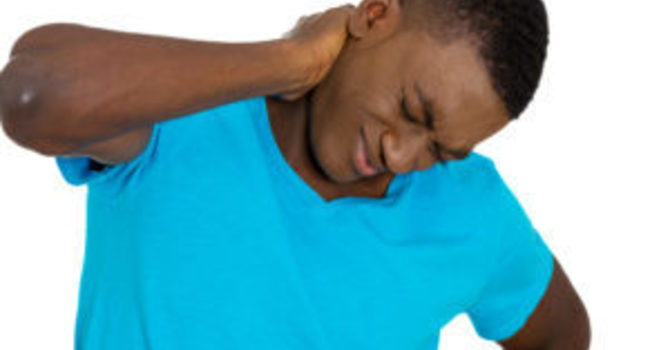
Heavy and improper use of backpacks has increased the rate of musculoskeletal pain in school age kids. It is estimated that 55% of children carry backpack loads beyond the recommended weight. In a survey studying students between the ages of 11-15 years old, 60% reported continuous pain from backpack use (Iyer et. al). The most common musculoskeletal pain complaints from backpack use from highest to lowest are as follows (Shamsodinni et. al):
- Upper back pain
- Shoulder pain
- Neck pain
- Lower back pain
Not enough studies currently exist, but it is suspected that improper fitting/use and overloaded backpacks can contribute to permanent postural distortions, especially in the critical ages of spinal development between the ages of 11-14 years old.
It’s been shown that carrying a backpack loaded with greater than 15% of the wearer’s body weight, will force a forward lean in posture and increase forward head posture. Forward head posture has been associated with many pain complaints of the neck, upper back, shoulders, headaches, and lower back pain (Cheung et. al).
Backpack safety awareness and implementation can significantly help reduce musculoskeletal pain and concerns for postural distortions in school age kids. The recommendations are as follows:
- Never wear a backpack that is greater than 10-15% of your body weight
- Use both straps – using a single strap has been shown to alter posture and gait (Pascoe et. al)
- Pack heavier items closest to the back
- Use lockers to store books, when available
- Use an ergonomically designed backpack:
- Wide and cushioned shoulder pads
- Comprehensive padding on the back
- Not falling greater than 4” inches below the waist, but enough so some of the load is supported by the top of the buttocks
- Use of compression straps to redistribute the weight to the hip and pelvis and away from the shoulders
- Multiple compartments (min of 2 main compartments with additional side compartments) for better load distribution
Many students will choose a less ergonomic but fashionable design because of familiarity with what a school bag “should look like”. However, in a study when students were asked to compare the comfort of backpack use after walking 20 minutes on a treadmill, they all preferred the more functionally designed, ergonomic backpack with the specifications listed above (Mackie et. al).
For successful implementation of backpack safety, coordination between parents, students, and teachers is the best strategy. Monitoring the student’s posture while wearing their backpacks is one insightful way to tell if they are carrying too much load or improperly wearing their bags. Checking in with them, and encouraging your kids to voice if and when they have discomfort or pain when wearing a backpack, will prevent any ongoing issues being unaddressed. Make sure they’re using their lockers when possible, and periodically weigh the contents of their backpacks relative to their body weight.
References:
Bygrave, S., Sj Legg, S. Myers, and M. Llewellyn. “Effect of backpack fit on lung function.” Ergonomics47.3 (2004): 324-29. Web.
Cheung, C.h., S.t. Shum, S.f. Tang, P.c. Yau, and Thomas T.w. Chiu. “The correlation between craniovertebral angle, backpack weights, and disability due to neck pain in adolescents.” Journal of Back and Musculoskeletal Rehabilitation22.4 (2009): 197-203. Web.
Forjuoh, S. N. “Parental knowledge of school backpack weight and contents.” Archives of Disease in Childhood88.1 (2003): 18-19. Web.
Ismaila, S.o. “Safe backpack weight limit for secondary school students in Ibadan, Southwestern Nigeria.” Alexandria Engineering Journal(2017): n. pag. Web.
Iyer, Shruti R. “An ergonomic study of chronic musculoskeletal pain in schoolchildren.” The Indian Journal of Pediatrics68.10 (2001): 937-41. Web.
Janakiraman, Balamurugan, Hariharasudhan Ravichandran, Senait Demeke, and Solomon Fasika. “Reported influences of backpack loads on postural deviation among school children: A systematic review.” Journal of Education and Health Promotion6.1 (2017): 41. Web.
Javadivala, Zeinab, Hamid Allahverdipour, Inman Dianat, and Mohsen Bazargan. “Awareness of Parents about Characteristics of a Healthy School Backpack .” Health Promotion Perspectives2.2 (2012): 166-72. Web.
Mackie, H.w, S.j Legg, J. Beadle, and D. Hedderley. “Comparison of four different backpacks intended for school use.” Applied Ergonomics34.3 (2003): 257-64. Web.
Navuluri, Sriram. “In What Grade Should Backpack Safety Education Begin in Schools?” Journal of School Health77.5 (2007): 223-24. Web.
Neuschwander, Timothy B., John Cutrone, Brandon R. Macias, Samantha Cutrone, Gita Murthy, Henry Chambers, and Alan R. Hargens. “The Effect of Backpacks on the Lumbar Spine in Children.” Spine35.1 (2010): 83-88. Web.
Pascoe, David D., Donna E. Pascoe, Yong Tai Wang, Dong-Ming Shim, and Chang K. Kim. “Influence of carrying book bags on gait cycle and posture of youths.” Ergonomics40.6 (1997): 631-40. Web.
Puckree, T., Sp Silal, and J. Lin. “School bag carriage and pain in school children.” Disability and Rehabilitation26.1 (2004): 54-59. Web.
Shamsoddini, AR, MT Hollisaz, and R. Hafezi. “Backpack Weight and Musculoskeletal Symptoms in Secondary School Students, Tehran, Iran .” Iranian J Publ Health39.4 (2010): 120-25. Web.






